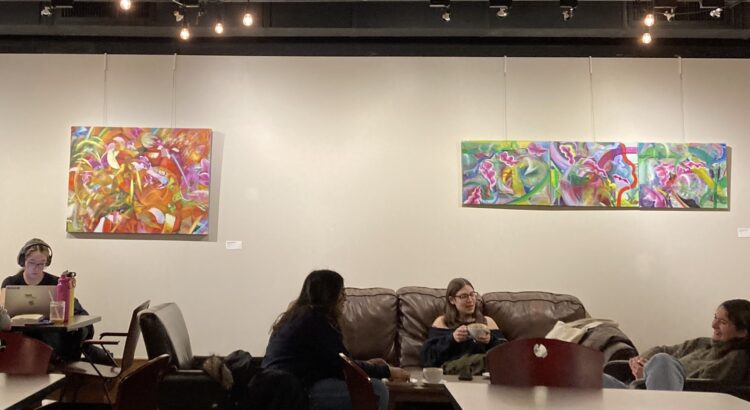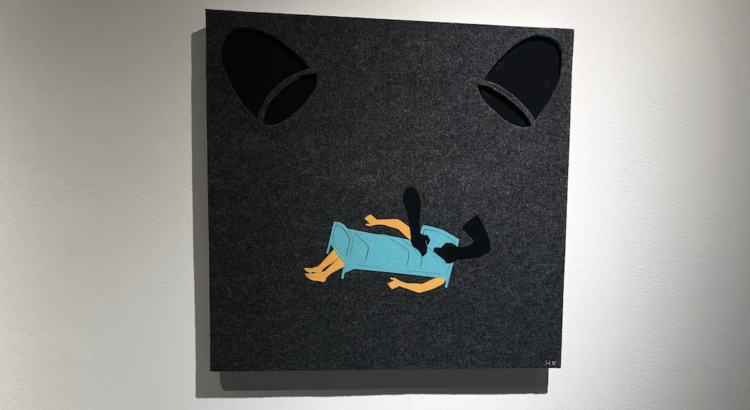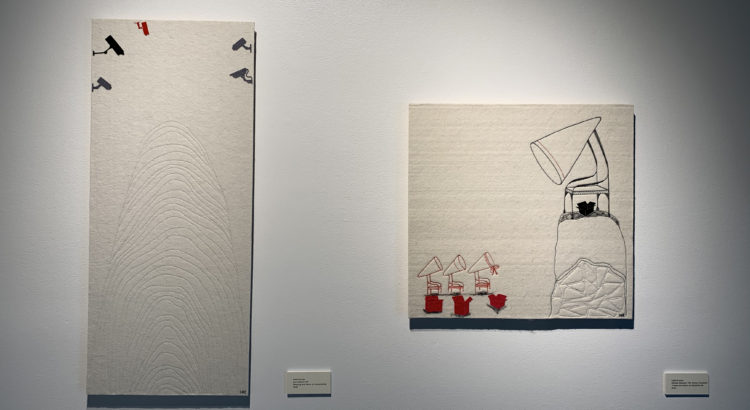Seeing Stars with Alexandra Collins’s Exuberant “Hyper Light”.
On Friday February 16th, I had the pleasure of attending the opening reception of Stamps senior Alexandra Collins’s first solo exhibition “Hyper Light ”. The work is on display at The Common Cup, an Ann Arbor coffee shop on Washtenaw Avenue. From still lifes of jello molds and glassware, to large zinging abstracts of flowers and shapes, the series is a colorful and bold exploration of the relationship between energy and tension.

Collins’s eye finds movement in stillness. Investigating the organic in the inorganic, she uses bold colors and streaky light to create energetic portraits of jello and glass. The tension between energy and stillness holds as a focal point in her still lifes like the horizon of a sea scape. The lively dynamic style contrasts and emphasizes the stillness of the subjects like a loud silence. Maybe you shouldn’t have ordered that second Mayan Mocha, or maybe you caught the jello jiggling from the corner of your eye.

Collins plays with the constraints of the canvas, in some works lining up several panels, in others tacking panels on in unexpected ways. The larger and more abstract pieces expand and challenge what can contain them. Pieces such as “Superbloom” are colorful menageries of plant life, bubbles and baubles, and streaks of light. Reminiscent of exploding stars and streaking galaxies, the arrangements represent a synthesis of color, shape, and form. The flowers are closed, and the paint around them vibrates and thrusts and sings like it just can’t be held anymore. Like the build up of a song with no release, we are held in those moments before explosion.
On a blustery February day, the basement location of the exhibition makes the colorful paintings feel like an underground secret, like spring charging beneath the earth. I felt a celebration and investigation of the feminine in the flower motifs and dining room still lifes. The celestial exuberance and energetic synthesis of shapes and color asking what feminine energy might look like, and where we could put it down. When I parked at a table for a few hours to sip coffee and send out piles of resumes and cover letters, I felt Hyper Lights hum resonating around me, not with the glory of the finish line, but with potential.

“Hyper Light” will be on display at The Common Cup on Washtenaw Avenue for about two more weeks, until March 2nd. The paintings are an energetic and possibility expanding presence in the cafe, which is a great place to study or meet with friends. You can find more of Collins’s work on her website and instagram, or by attending Commence, a graduating senior exhibition held at the Stamps Gallery in April.
















